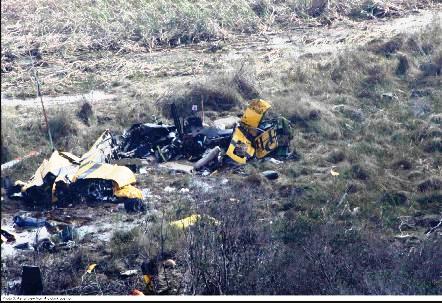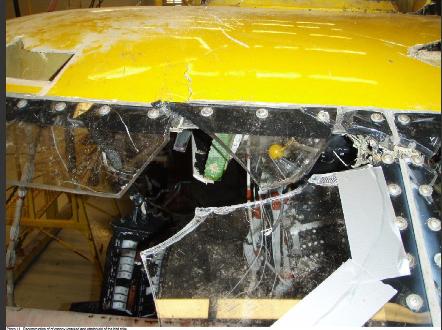Release of factual data on the crash of a Petroleum Helicopters Sikorsky S-76C++ seven minutes after departure from a heliport in Louisiana on 4 January 2009 reveals a flawed paper trail between the US Federal Aviation Administration (FAA) and Bell Helicopter affiliate Aeronautical Accessories for the acrylic replacement windscreen that shattered when the 14-seat twin helicopter hit a bird.
Both pilots and six of the seven passengers on board were killed after the helicopter descended into a swamp after a loud noise was heard in the cockpit and the torque to both engines subsequently dropped to zero. According to the flight data recorder, the pilots were cruising at 135kt (250km/h) and about 259m (850ft) altitude at the time of the loud noise picked up on the cockpit voice recorder.
 |
|---|
Crash site ©NTSB |
Post-crash analysis determined that the helicopter struck a female Red Tail hawk on the right (pilot’s side) monolithic cast acrylic windscreen adjacent to the upper windshield frame, according to factual information released by the US National Transportation Safety Board (NTSB) today. Female Red Tail hawks weigh an average of 1kg (2.4lb), says the NTSB.
Investigators determined that fractures on the “large and sharp-edged” fragments of the shattered windscreen were typical of “brittle overstress”.
 |
|---|
Reconstructed right-side canopy ©NTSB |
PHI originally purchased the helicopters from Sikorsky with glass laminated windscreens until switching to the cast acrylic versions for its entire fleet over time after experiencing problems with glass delaminating in the early 1980s, according to the NTSB structures group factual report.
Several acrylic windscreens are available for the model, including the monolithic cast windscreen made by Aeronautical Accessories and a stretched acrylic version offered by Sikorsky.
After the crash, Sikorsky issued an "all operators" letter revealing that Aeronautical Accessories’ cast acrylic windscreens provided the "equivalent" level of impact tolerance as Sikorsky-provided glass and STC stretched acrylic windscreens only at speeds below 109kt. As of 11 September 2009, NTSB says PHI has refitted the cast acrylic windscreens in 32 of its 46 S-76 helicopters with glass laminated windscreens.
To gain approval to sell a replacement windscreen, Aeronautical Accessories was required to first obtain a supplementary type certificate (STC) from the FAA followed by parts manufacturer approval (PMA). The company gained the approvals in 1997 and 1998, respectively.
Despite STC paperwork indicating that test and analysis data was available to support the approval, investigators found no associated documentation “to indicate that (Aeronautical Accessories) complied with the intent” of the applicable rules. Those rules, depending on the FAA's interpretation, would have required that the windshields either be made of non-splintering safety glass, be made of material “that will not break into dangerous fragments” or proof be given by test or analysis that a safe landing could be made after hitting a 1kg bird at maximum speed at altitudes up to 8,000ft.
“No records of the tests and analysis have been located by the NTSB nor provided to the NTSB by neither the FAA nor the STC holder, (Aeronautical Accessories),” writes the NTSB.
Aeronautical Accessories could not be reached immediately for comment.
Source: FlightGlobal.com
















